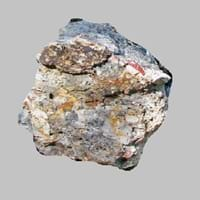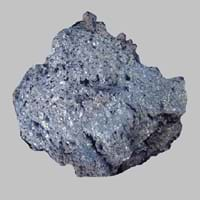Definition
Novaculite is a dense, hard, fine-grained, siliceous metamorpic rock which is a type of chert that breaks with conchoidal fracture
Picrite is a variety of high-magnesium olivine basalt that is very rich in the mineral olivine
Origin
Unknown
Hawaii Islands
Discoverer
Unknown
Unknown
Etymology
From Latin word novacula, for razor stone
From Greek pikros bitter + -ite, 19th century
Class
Sedimentary Rocks
Igneous Rocks
Sub-Class
Durable Rock, Hard Rock
Durable Rock, Hard Rock
Group
Not Applicable
Volcanic
Other Categories
Fine Grained Rock, Opaque Rock
Fine Grained Rock, Opaque Rock
Texture
Banded, Glassy, Rough, Vitreous
Earthy, Rough
Color
Black, Brown, Green, Grey, Red, White
Black, Brown, Colourless, Green, Grey, Pink, White, Yellow
Durability
Durable
Durable
Scratch Resistant
Yes
Yes
Appearance
Glassy or Pearly
Rough and Shiny
Interior Uses
Countertops, Decorative Aggregates, Flooring, Interior Decoration
Countertops, Decorative Aggregates, Homes, Interior Decoration
Exterior Uses
As Building Stone, Garden Decoration
As Building Stone, As Facing Stone, Garden Decoration, Paving Stone
Other Architectural Uses
Curbing
Curbing
Construction Industry
Arrowheads, Building houses or walls, Cement Manufacture, Construction Aggregate, Cutting Tool, for Road Aggregate, Knives, Landscaping, Making natural cement, Production of Glass and Ceramics, Rail Track Ballast, Roadstone, Spear Points, Used to sharpen metal tools and weapons
As a Sintering Agent in Steel Industry to process Iron Ore, Cement Manufacture, for Road Aggregate, Manufacture of Magnesium and Dolomite Refractories, Roadstone, Used for flooring, stair treads, borders and window sills.
Medical Industry
Not Yet Used
Not Yet Used
Antiquity Uses
Artifacts, Monuments
Artifacts, Monuments, Sculpture
Commercial Uses
Cemetery Markers, Gemstone, In aquifers, In fire-starting tools, Jewelry, Manufacture of tools, Pebbles are used in ball mills to grind in ceramics industry, To determine the gold content of jewelry
As a Feed Additive for Livestock, As armour rock for sea walls, Metallurgical Flux, Pottery, Source of Magnesia (MgO)
Types
Not Available
Oceanite
Features
Clasts are smooth to touch, Easily splits into thin plates, Has High structural resistance against erosion and climate
Host Rock for Lead
Archaeological Significance
Famous Monuments
Data Not Available
Data Not Available
Sculpture
Not Yet Used
Used
Famous Sculptures
Not Applicable
Data Not Available
Pictographs
Not Used
Not Used
Petroglyphs
Not Used
Not Used
Figurines
Not Yet Used
Used
Formation
Novaculite forms when microcrystals of silicon dioxide grow within soft sediments that become limestone or chalk. The formation of Novaculite can be either of chemical or biological origin.
Picrite is a fine-grained, hard rock which is a type of metasomatite, essentially altered basalt. It forms with or without crystallization, either below the surface as intrusive rocks or on the surface as extrusive rocks.
Mineral Content
Quartz, Silicon
Biotite, Olivine, Plagioclase, Pyrrhotite
Compound Content
Ca, Silicon Dioxide
Al, CaO, Carbon Dioxide, Mg, MgO
Types of Metamorphism
Not Applicable
Burial Metamorphism, Cataclastic Metamorphism, Impact Metamorphism, Regional Metamorphism
Types of Weathering
Not Applicable
Biological Weathering
Types of Erosion
Chemical Erosion, Coastal Erosion, Glacier Erosion
Chemical Erosion, Coastal Erosion, Glacier Erosion, Sea Erosion, Water Erosion, Wind Erosion
Grain Size
Fine Grained
Fine Grained
Fracture
Conchoidal
Uneven
Streak
Colorless
White, Greenish White or Grey
Porosity
Less Porous
Less Porous
Luster
Waxy and Dull
Subvitreous to Dull
Cleavage
Non-Existent
Imperfect
Specific Gravity
2.5-2.7
2.75-2.92
Transparency
Translucent to Opaque
Opaque
Density
2.7 g/cm3
1.5-2.5 g/cm3
Resistance
Heat Resistant, Impact Resistant, Pressure Resistant, Wear Resistant
Heat Resistant
Deposits in Eastern Continents
Asia
China, India, Iran, Japan, Oman, Russia, Saudi Arabia, Taiwan, Thailand, Vietnam
India, Russia
Africa
Kenya, Morocco, South Africa, Tanzania
South Africa
Europe
Austria, France, Greece, Italy, Malta, Poland, Portugal, Serbia, Spain, Sweden, United Kingdom
Iceland
Others
Greenland, Mid-Atlantic Ridge
Not Yet Found
Deposits in Western Continents
North America
Canada, Mexico, USA
Canada, USA
South America
Bolivia, Brazil
Brazil
Deposits in Oceania Continent
Australia
New South Wales, Queensland, South Australia, Western Australia
Not Yet Found
Novaculite vs Picrite Characteristics
Though some rocks look identical, they have certain characteristics which distinguish them from others. Characteristics of rocks include texture, appearance, color, fracture, streak, hardness etc. Novaculite vs Picrite characteristics assist us to distinguish and recognize rocks. Also you can check about Properties of Novaculite and Properties of Picrite. Learn more about Novaculite vs Picrite in the next section. The interior uses of Novaculite include Countertops, Decorative aggregates, Flooring and Interior decoration whereas the interior uses of Picrite include Countertops, Decorative aggregates, Homes and Interior decoration. Due to some exceptional properties of Novaculite and Picrite, they have various applications in construction industry. The uses of Novaculite in construction industry include Arrowheads, Building houses or walls, Cement manufacture, Construction aggregate, Cutting tool, For road aggregate, Knives, Landscaping, Making natural cement, Production of glass and ceramics, Rail track ballast, Roadstone, Spear points, Used to sharpen metal tools and weapons and that of Picrite include As a sintering agent in steel industry to process iron ore, Cement manufacture, For road aggregate, Manufacture of magnesium and dolomite refractories, Roadstone, Used for flooring, stair treads, borders and window sills..
More about Novaculite and Picrite
Here you can know more about Novaculite and Picrite. The life cycle of a rock consists of formation of rock, composition of rock and transformation of rock. The composition of Novaculite and Picrite consists of mineral content and compound content. The mineral content of Novaculite includes Quartz, Silicon and mineral content of Picrite includes Biotite, Olivine, Plagioclase, Pyrrhotite. You can also check out the list of all Sedimentary Rocks. When we have to compare Novaculite vs Picrite, the texture, color and appearance plays an important role in determining the type of rock. Novaculite is available in black, brown, green, grey, red, white colors whereas, Picrite is available in black, brown, colourless, green, grey, pink, white, yellow colors. Appearance of Novaculite is Glassy or Pearly and that of Picrite is Rough and Shiny. Properties of rock is another aspect for Novaculite vs Picrite. The hardness of Novaculite is 7 and that of Picrite is 6.8. The types of Novaculite are Not Available whereas types of Picrite are Oceanite. Streak of rock is the color of powder produced when it is dragged across an unweathered surface. The streak of Novaculite is colorless while that of Picrite is white, greenish white or grey. The specific heat capacity of Novaculite is 0.74 kJ/Kg K and that of Picrite is 0.88 kJ/Kg K. Depending on the properties like hardness, toughness, specific heat capacity, porosity etc., rocks are resistant to heat, wear, impact, etc.Novaculite is heat resistant, impact resistant, pressure resistant, wear resistant whereas Picrite is heat resistant.





